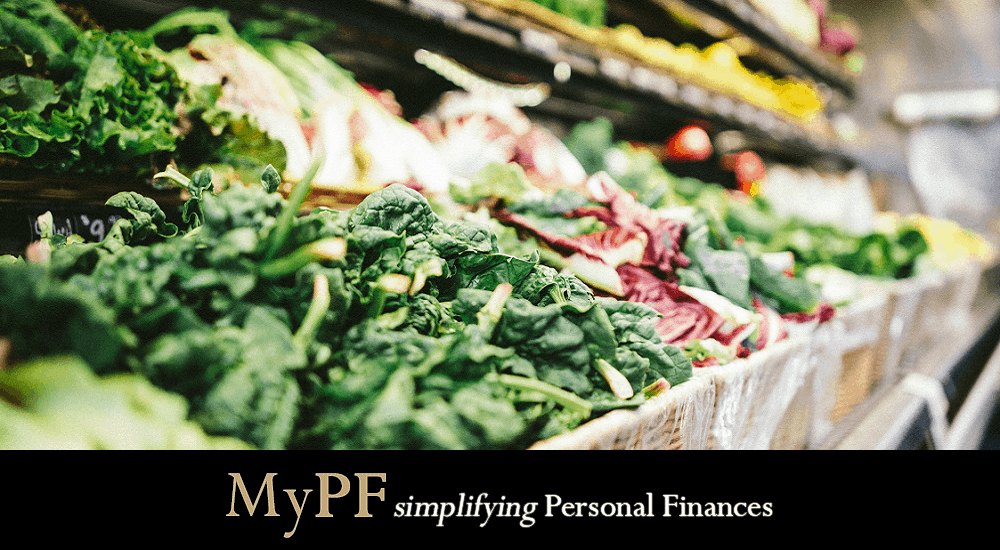GDP? Inflation? World Economy? Having trouble understanding how all this relates to you now?
Department of Statistics Malaysia (DOSM) and Bank Negara Malaysia (BNM) have just released the Malaysian economic quarterly results and data for 1Q 2021.
You would have surely notice local news portals highlighting the quarterly results every quarter but perhaps you don’t really know what to make of it.
Using the latest 1Q 2021 results, this article will help you recognize the important points that affect your finances and investments.
Contents
#1: The Economy Actually Improved in 1Q 2021
It was certainly a trying economic year in 2020, and many were badly affected. The economy declined by 5.6%, with the worst quarter being 2Q 2020. Looking at 1Q 2021, despite the imposition of movement control restrictions (MCO), the economy is actually on the path of recovery, marking a decline of only 0.5%.
For context, the economy declined by 2.7% and 3.4% respectively in 3Q 2020 and 4Q 2020. Hence, the 0.5% decline in 1Q 2021 indicates that the economy is steadily recovering back to positive growth which is great news for everyone. Confidence is steadily recovering back to normal and even with the recent imposition of MCO again in May 2021, confidence is still expected to continue its recovery (this will be explained more later in this article when we discuss BNM’s projected growth for 2021).
How important is this to you? In a nutshell, this indicates that businesses and companies are turning more positive on the overall conditions. If you have experienced a salary cut in 2020, it is now more probable that employers would restore pay to pre-pandemic salaries. For some of you who have lost your job, this news is also promising to you as it indicates that employers would want to hire more.
#2: Most Sectors are Starting to Recover Especially Manufacturing
Digging deeper into the different economic sectors, most of them are on the path towards positive growth with the manufacturing and agriculture sectors growing positively. This means the three other sectors of services, mining, and construction are still declining.
Of particular significance, the manufacturing sector grew by 6.6% in 1Q 2021, the highest among every other sectors. The agriculture sector came in at second with a 0.4% growth. Services, mining, and construction sectors declined by 2.3%, 5.0%, and 10.4% respectively.
Why is manufacturing the strongest growing sector? This is because the MCO restrictions did not affect factories that much as they are still allowed to operate. According to the report, there is continued demand for Electrical and Electronics products by other countries. Most of these products are used as parts of more sophisticated products in other countries, hence, it is supporting the manufacturing industry in Malaysia.
How can you use this information? In a nutshell, this means that manufacturing and mining companies are doing much better compared to the other sectors (do continue to monitor other sectors for positive growth in subsequent quarters) and it might be a good time to buy into stocks that are related to these industries.
#3: Malaysia’s Largest Export Partners Recover, Supporting the Export Sector
Malaysia is a country that exports and imports a lot of products to and from foreign countries. The top 3 biggest trading partners for Malaysia are China, Singapore, and the United States, while it also exports a sizeable amount to Europe.
Malaysia exported about $234bn worth of products in 2020, with China being the largest at 16.1%, while Singapore and the United States make up 14.5% and 11.1% respectively. In 1Q 2021, China rebounded strongly to grow at 18.3%, much higher than 4Q 2020 growth of 6.5%. The United States entered positive growth with 0.4%, higher than -2.4% in 4Q 2021. Singapore followed the same trend, growing at 0.2% compared to -2.4% in 4Q 2020.
What does this mean for you? A recovery in Malaysia’s trading partners means good news for local companies that export a lot of products overseas. This improvement could potentially improve the financial performance of local companies and thus encourage them to increase your salary and hire more. After all, an improvement in exporting companies profits also means that smaller companies could benefit from supplying and servicing bigger exporting companies.
However, you need to be careful as net exports growth was actually lower at 0.8% in 1Q 2021 compared to 10.0% in 4Q 2020. This is due to companies importing much more this quarter as they need more materials to make their products. This indicates that they are anticipating that 2021 will be a big year for exports, hence they are importing more now.
#4: The External Debt of Malaysia is Still Increasing
External debt here means the total debt and loans borrowed by Malaysian companies, government, and people from foreign investors. The total external debt grew from RM958bn in 4Q 2020 to breach the trillion mark of RM1,040bn in 1Q 2021.
A common measure to understand whether this is high or not is to use the total external debt to GDP ratio (External Debt / GDP).
This number has increased sharply from 67.6% in 4Q 2020 to 73.2% in 1Q 2021. At this rate, the debt is still manageable with BNM stating that Malaysia remains in control of the debt. However, the sharp rise this quarter is still concerning.
How does this affect you? You won’t see any direct effect of this on your finances. It will however potentially impact your investments in companies in Malaysia. If external debt continues to increase sharply in the coming quarters, you might see stock prices fall if rating agencies such as RAM, MARC, S&P, Moody, and Fitch downgrade some of the companies debt ratings or worse, Malaysia’s credit rating as a whole.
#5: Expect Prices to Increase This Year
Prices are finally increasing back again in 1Q 2021 after, declining for 3 quarters straight last year during the pandemic.
Headline inflation increased to 0.5% in 1Q 2021, higher than -1.5% in 4Q 2020. This was actually due to an increase in fuel prices as global oil prices have recovered due to the recovery in many countries around the world. BNM is projecting that prices in 2021 will increase by 2.5% to 4.0%, as the economy starts its path towards recovery for the year.
What does this mean for you? Brace for price increases in the things that you buy in the coming months as you might see some sharp increases for some of the items. Budget and plan your finances properly now to cover for your family’s basic necessities. Don’t let the price increases catch you off guard.
#6: There Remains A Lot of Risk to the Malaysian Economy
Even though things have turned positive in 1Q 2021, there remains a lot of risk to the Malaysian economy moving forward.
The cases of Covid-19 has spiked in recent weeks, forcing the government to impose yet another MCO across the nation. The rollout of the vaccine could be impacted by this thereby slowing down the speed of the nation’s economic recovery.
There are three more risk factors that are cited by BNM which includes volatile global oil prices, slower progress of major infrastructure projects, and higher volatility in the financial markets.
How should you take these risks into account in your own life? One, the increase in Covid-19 cases and slower rollout of vaccine would mean that businesses and firms would still need to be shut down from time to time and your job and salary will continue to be in danger. Two, volatile global oil prices could increase the cost of the fuel that you need for your transportation. Finally, higher volatility in the financial markets mean that your investments are riskier and could suffer big losses.
#7: All in All, the Malaysian Economy Is Expected to Rebound This Year
BNM projects that Malaysia will grow by 6.0% to 7.5% in 2021; much higher than 2020 growth of -5.6%. This signifies that the economy is expected to rebound this year towards the second half of 2021.
They have cited 5 big reasons for this rebound, which includes:
- Stronger demand from other countries.
- Most sectors will be allowed to operate.
- Recovery in the job market.
- Policy support from PENJANA, 2021 Budget, PERMAI, and PEMERKASA.
- Large infrastructure projects (ECRL, LRT3, etc).
What does this mean for you? If you are a business owner, you should be more positive from the increased business confidence with the recovery in the global economy and also less shutdown of businesses. If you are an employee, the job market should be getting better with salaries expected to increase and businesses hiring more. The policy support is expected to benefit you but not so much, as most of them are expiring soon. Large infrastructure projects won’t benefit you in the short-term as most of these projects would only be completed at least 3 to 5 years down the line.
Conclusion
Understanding economic results from the government is not an easy task. Hence, this article details what you can understand from the 1Q 2021 results. Generally, the economy is starting to recover from the Covid-19 pandemic, with the manufacturing sector taking the lead. With Malaysia’s big trading partners of China, Singapore, and US also starting to recover, Malaysia’s exports are expected to improve also. External debt remains manageable while price of ordinary goods and products might be on the rise this year with the risk of Covid-19 cases increasing and the slowing down of vaccination potentially harming the economy. Finally, the economy is expected to rebound this year, growing 6.0% to 7.5%.
Let us know in the comments below how you feel about Malaysia’s economy!












Leave A Comment